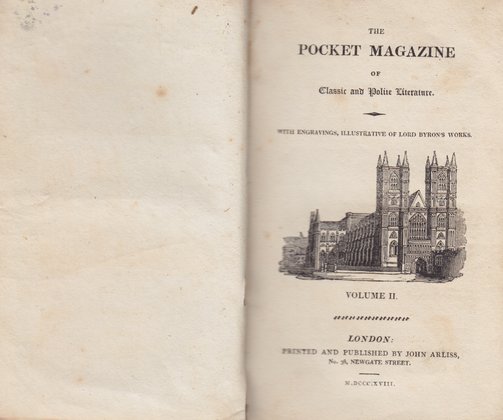Narrative
Popular Poets
4. After dealing with unrelenting interest in his personal life for years, Byron left England in 1816 to avoid further public scrutiny. He would never return to the country. In the summer of 1816, Byron took up residence at the Villa Diodati by Lake Geneva, Switzerland with his personal physician, John William Polidori. It was during this infamous “Haunted Summer” that Byron hosted Percy Bysshe Shelley, Mary Wollstonecraft Godwin (later Mary Shelley), and Mary’s half-sister Claire Clairmont. In the course of their visit, Byron suggested that they hold a story writing contest, which led to the composition of Mary Shelley’s Frankenstein (1818). Byron himself composed a Fragment of a Novel for the contest, which later inspired Polidori’s novella The Vampyre (1819). The allure associated with this famous summer only added to Byron’s mystique and has further contributed to his continued popularity since the nineteenth century.
Also in 1816, Byron composed The Siege of Corinth, a narrative poem inspired by events during the Ottoman-Venetian Wars.In 1817, Byron relocated to Italy and, in the same year, he wrote Cain, The Deformed Transformed, the fourth canto of Childe Harold’s Pilgrimage, and Manfred. Described by Byron as a “metaphysical drama,” Manfred was a verse closet drama marked by supernatural and Faustian elements and led by a haunted Byronic Hero who is forced to take exile in the mountains.This volume of The Pocket Magazine of Classic and Polite Literature (2:1818) includes plates from Siege of Corinth and Manfred.








